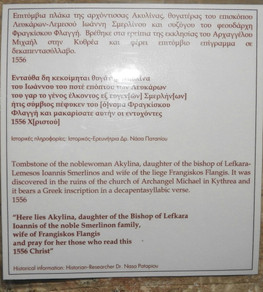Limassol Castle
- Olive
- Aug 31, 2020
- 2 min read
Updated: Oct 7, 2021
Limassol Castle was originally erected in 1193 by Guy de Lusignan on the site of an early Christian basilica from 4th to 7th century. There is evidence also of a Middle Byzantine monument (10th - 11th century) at the site as well as a church, which may have been Limassol's first cathedral. Legend has it that Richard the Lionheart married Berengaria of Navarre at this site in 1191 when he was on his way to the Holy Land on the 3rd Crusade.
In 1538, the castle was captured by the Ottomans. The Venetians, who were ruling Cyprus at that time, recaptured it and demolished it in 1567-1568 for fear of it being seized again. The present castle was completed in 1590 by the Ottomans and was greatly fortified. Prison cells were made in the basement and were used up to 1950.
The castle houses the Cyprus Medieval Museum with exhibits from the 3rd to the 18th century, including tombstones, pottery, Byzantine silverware, crosses, weapons and coins.
The display in the middle of the lower floor in the first picture below contains items from the beginning of the 13th century to the mid-14th century, excavated in Nicosia from a well which probably belonged to a nearby house. The second picture from the collage displays a large plate with the motif of a woman holding a jug. The third picture is of a bottle decorated with gold. The fifth picture portrays a menorah, a symbol testifying to the presence of Jews who thrived under the Ottoman period with an influx of Sephardic Jews. The penultimate picture is a silver plate from the treasure of Lambousa, dated 613-629 AD.
Stairs lead to the roof of the castle which gives a view of central Limassol. The minaret of Kebir Mosque and the domes of Ayia Napa Cathedral can be seen in the second picture. In the castle grounds is a reconstruction of an olive-oil press used in the 7th - 9th centuries. The distinctive, gnarled trunk of an olive tree is depicted in the last picture, suggesting it is many decades old.
This museum provides a significant flavour of historical Cyprus, particularly in the damp musty underground chamber which replicates the ambience of the 16th century! I was glad to emerge into the warm sunlight of August 2020! A visit to Limassol castle creates an authentic historical experience.



























































Comments